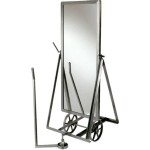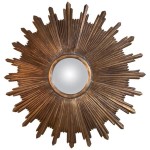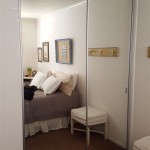Wood Trim for Mirrors: Enhancing Reflections with Natural Elegance
Mirrors, essential elements in both residential and commercial spaces, serve both functional and decorative purposes. While the reflective surface itself is crucial, the framing surrounding it significantly impacts the overall aesthetic. Wood trim offers a versatile and timeless option for enhancing mirrors, injecting warmth and character into any room.
The selection of wood trim for mirrors presents a wide array of choices, each influencing the final look. Popular wood species include oak, known for its strength and prominent grain, maple with its smooth, fine texture, and cherry, prized for its rich, reddish-brown hue. Pine and fir offer more budget-friendly options while still providing a natural wood aesthetic.
Beyond species, the style of the wood trim contributes significantly to the mirror's overall design. A simple, flat frame provides a clean, minimalist look, suitable for contemporary interiors. More ornate profiles, featuring intricate carvings or moldings, can complement traditional or classical settings. Beaded, chamfered, or ogee edges offer varying levels of detail and visual interest.
The width of the wood trim also plays a crucial role in the mirror's appearance. Narrower trims create a subtle frame, allowing the mirror surface to take center stage. Wider trims, on the other hand, create a bolder statement, drawing attention to the frame itself and potentially adding a sense of grandeur. The size of the mirror itself should be considered when selecting trim width; a large mirror may benefit from a wider frame to provide visual balance.
The finish applied to the wood trim significantly impacts its durability and aesthetic. Painting the trim allows for a wide range of color options, enabling coordination with existing décor. Popular choices include classic white, which brightens the space, or darker shades for a more dramatic effect. Staining allows the natural wood grain to show through while adding color and protection. Clear finishes, such as polyurethane or lacquer, preserve the natural wood color while providing a protective barrier against moisture and wear.
Proper installation techniques are essential for ensuring the longevity and visual appeal of wood trim for mirrors. Accurate measurements are paramount to achieving a precise fit. The trim should be securely attached to the mirror frame using appropriate adhesives and fasteners. Wood glue provides a strong bond, while finishing nails or brads offer additional reinforcement. Countersinking and filling nail holes create a smooth, seamless finish.
Maintaining the beauty of wood trim requires regular care. Dusting with a soft cloth helps prevent the buildup of grime. Periodic cleaning with a damp cloth and mild soap solution can remove more stubborn dirt. Avoid using harsh chemicals or abrasive cleaners, as these can damage the finish. Reapplying a protective finish every few years can help maintain the trim's luster and protect it from moisture damage.
Beyond aesthetics, wood trim for mirrors can offer practical benefits. The frame can protect the edges of the mirror from chipping or cracking. It can also provide structural support, particularly for larger or heavier mirrors. Furthermore, the trim can help conceal any imperfections in the wall surrounding the mirror, creating a cleaner, more polished look.
Choosing the right wood trim involves considering the overall style of the room, the size and shape of the mirror, and the desired level of formality. For a rustic aesthetic, reclaimed wood with its weathered texture and natural imperfections can create a charming focal point. For a modern look, sleek, dark-stained wood can add sophistication and drama. In a traditional setting, ornate, gilded frames can evoke a sense of timeless elegance.
The versatility of wood trim allows for customization and creativity. Adding decorative elements, such as inlays, carvings, or painted accents, can further personalize the mirror and enhance its visual appeal. Experimenting with different wood species, finishes, and profiles can create unique and eye-catching designs.
The use of wood trim for mirrors extends beyond residential applications. In commercial settings, such as hotels, restaurants, and retail stores, wood-framed mirrors can contribute to the overall ambiance and brand identity. The choice of wood and finish can help create a specific mood, whether it be warm and inviting or sleek and sophisticated. The strategic placement of mirrors can also enhance the perception of space and light within a commercial environment.
When selecting wood trim for mirrors, consider the environmental impact of the chosen wood. Opting for sustainably harvested wood from responsibly managed forests helps minimize the environmental footprint. Reclaimed wood offers another eco-friendly option, giving new life to salvaged materials while reducing the demand for newly harvested timber.

Easy Diy Tutorial Adding Trim Around A Giant Mirror For Ers

How To Frame A Mirror

Mirror Frame Diy How To Update A Basic Bathroom Our Faux Farmhouse

Mirror Frame Diy How To Update A Basic Bathroom Our Faux Farmhouse

How To Build A Wood Frame Around Bathroom Mirror Young House Love

Diy Stick On Mirror Frame Sawdust Sisters

How To Frame A Mirror Sand And Sisal

Easy Diy Tutorial Adding Trim Around A Giant Mirror For Ers

Custom Mirrors Smitty S Quality Glass Get A Free Quote

Mirror Frame Diy How To Update A Basic Bathroom Our Faux Farmhouse








